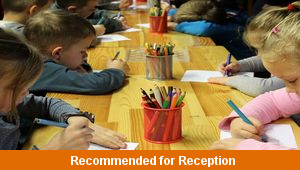Book Questions

This literacy teaching pack for the Foundation Stage gets the children to identify and describe a selection of non-fiction books that can be used to answer key questions on a selection of different curriculum topics.
The class can practise using some non-fiction texts to find the answers to a range of key questions about some of the different animals that can be found living on a farm.
Download this teaching pack including a lesson plan, classroom activities and an interactive presentation to identify and describe a selection of non-fiction books that can be used to answer key questions on a selection of different curriculum topics
Activities in this teaching pack include display posters to identify different sentences that can be used to answer questions on a specific topic and a set of cards to select and group non-fiction books that can be used to answer key questions about a classroom topic.
The interactive presentation gets the children to explore how to select and use non-fiction books to find answers to key questions on different topics.
This lesson is part of a literacy scheme of work to get the children to identify and model how to use different reading skills to access information on a range of topics that feature in non-fiction information books. There are teaching activities for shared learning, differentiated worksheets to support independent learning and interactive presentations to introduce concepts and key skills.
-

Halving Things
Explain and model how to find and record the halves of some of the different objects that can be used at home and in school
-

School Friends
Identify and learn classroom routines and organisation by exploring and describing information and likes and dislikes for each of their classmates
-

Classroom
Identify the location and function of different objects used in the classroom and explore how to formulate rules to manage the classroom safely
-

Shape Patterns
Identify, describe and compare the sequences of geometric shapes that have been used to create a range of different patterns
